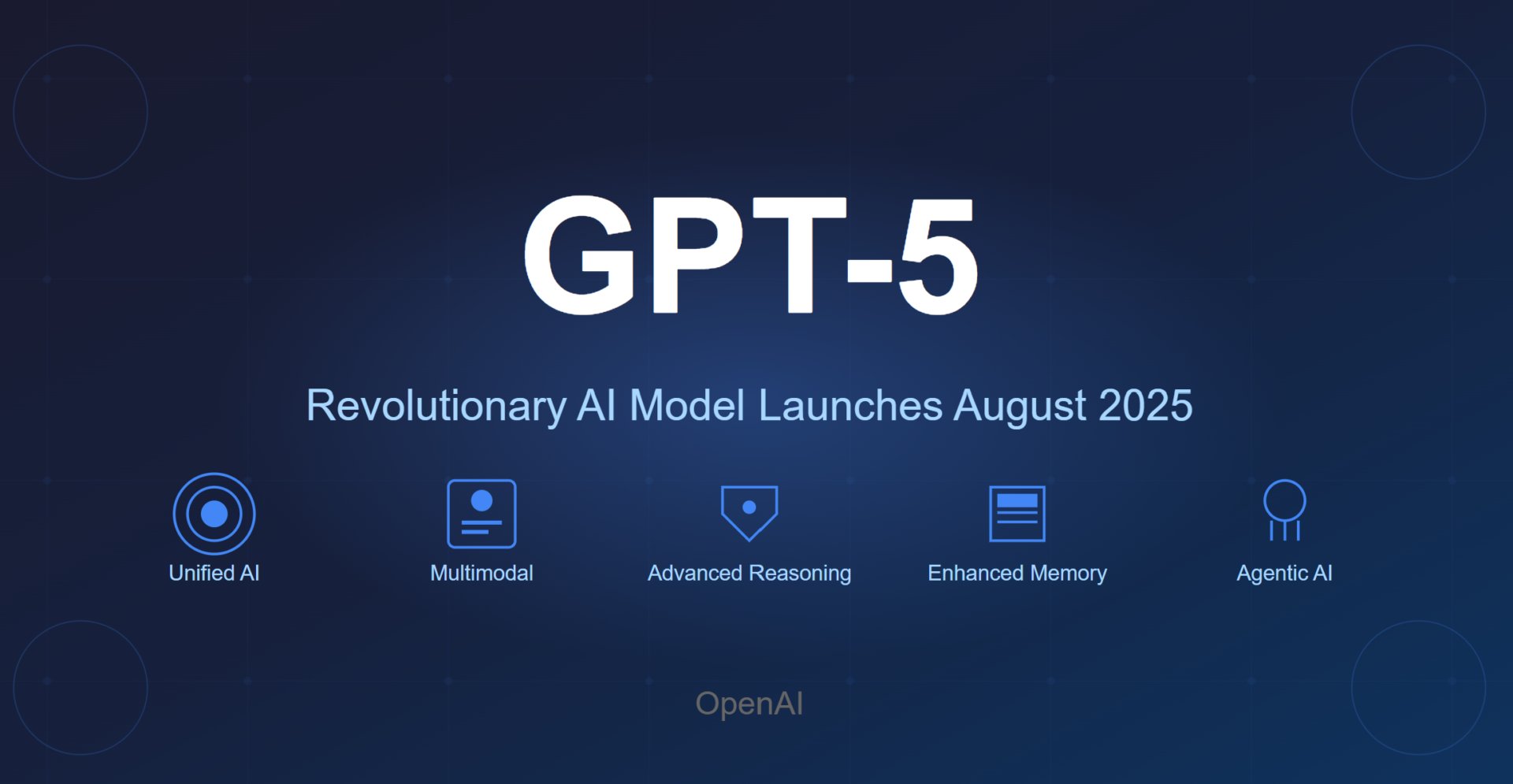
OpenAI Sets August 2025 Target for GPT-5 Launch, Promising Unified AI Intelligence
OpenAI is preparing to launch GPT-5 in August 2025, marking a significant milestone in artificial intelligence development that promises to unify the company’s disparate AI models into a single, more powerful system. The highly anticipated release comes as the AI race intensifies between major tech companies and global powers.
August Launch Timeline Confirmed by Multiple Sources
According to sources familiar with OpenAI’s plans, GPT-5 is expected to debut in early August 2025, though the company has a history of shifting release dates. CEO Sam Altman recently posted on X that GPT-5 would be released “soon,” while appearing on Theo Von’s podcast on July 23 to praise the new model’s capabilities.
Early signs of GPT-5 testing have already emerged in the wild, with security experts conducting red-teaming exercises and references to “gpt-5-reasoning-alpha-2025-07-13” appearing in OpenAI’s internal repositories, including the BioSec Benchmark system.
Revolutionary Unified Intelligence System
The most significant change in GPT-5 is what Sam Altman calls “magic unified intelligence.” Unlike current ChatGPT offerings that require users to choose between different models like GPT-4o, o3, or o4-mini, GPT-5 will integrate all of OpenAI’s technologies into a single system.
“We will no longer ship o3 as a standalone model,” Altman explained in his February roadmap announcement. “In both ChatGPT and our API, we will release GPT-5 as a system that integrates a lot of our technology.”
This unified approach eliminates the confusing model selector, automatically determining whether to provide quick answers or engage in deep analytical reasoning based on user needs.
Five Game-Changing Capabilities
1. Agentic AI Functionality: GPT-5 moves beyond passive assistance to active task execution. While GPT-4 can help plan projects, GPT-5 will actually implement them – from populating task management systems to sending team notifications and drafting communications.
2. True Multimodal Processing: The model will natively understand text, voice, images, and video simultaneously, processing them in unified context rather than isolation. Users could record whiteboard sessions with spoken explanations and visual diagrams, and GPT-5 will comprehend all elements together.
3. Massive Context Window: Expanding from GPT-4o’s 128,000 tokens to over one million tokens, GPT-5 can process entire codebases, multi-year datasets, or comprehensive business documentation in a single interaction.
4. Persistent Memory Enhancement: Unlike GPT-4’s limited recall, GPT-5 will maintain true persistent memory across time, tools, and sessions, learning user preferences, communication styles, and project contexts without constant reminders.
5. Advanced Reasoning Architecture: Incorporating breakthroughs from OpenAI’s o-series reasoning models, GPT-5 will demonstrate significantly improved logic, problem-solving, and reduced hallucinations through structured chain-of-thought processing.
Pricing Tiers and Accessibility
OpenAI plans a tiered access model for GPT-5:
- Free Tier: Unlimited chat access to GPT-5 at standard intelligence settings, subject to abuse thresholds
- ChatGPT Plus: Higher intelligence level for enhanced performance
- ChatGPT Pro: Maximum intelligence capabilities for professional and enterprise use
The company will also release “mini” and “nano” versions through its API, offering developers flexible options that balance computational power with speed and cost efficiency.
Technical Infrastructure and Training
GPT-5’s development leverages Microsoft’s AI supercomputing clusters and NVIDIA’s latest H200 GPUs, representing a 10-20x increase in computing power compared to GPT-4. The model has been trained on an unprecedented dataset, potentially including proprietary data acquired by OpenAI alongside public internet sources.
Training costs are estimated in the hundreds of millions of dollars, with OpenAI implementing rigorous safety testing protocols including extensive red-teaming to identify vulnerabilities before public release.
Market Competition and Strategic Timing
The August launch positions OpenAI to maintain its leadership as competitors like Google’s Gemini, Anthropic’s Claude, and Meta’s AI initiatives intensify their development efforts. The release comes amid the Trump administration’s emphasis that the U.S. must do “whatever it takes” to beat China in AI development.
Industry analysts note that GPT-5’s success will be crucial for OpenAI’s market position, especially as rivals develop their own innovative technologies and compete for enterprise customers.
Additional Developments Expected
Alongside GPT-5, OpenAI may release Sora 2, an updated version of its video generation tool. Screenshots showing internal filenames labeled “Sora 2” suggest improvements to compete with Google’s Veo 3, Kling 2, and Runway in the rapidly evolving AI video generation space.
The company is also expected to launch its first open-weights model since GPT-2 in 2019, though timing may vary relative to GPT-5’s release.
Industry Implications
GPT-5 represents more than an incremental upgrade – it’s a paradigm shift in how users interact with AI. By 2026, Gartner predicts over 50% of enterprise workflows will involve AI agents executing tasks end-to-end, a transformation GPT-5 is positioned to accelerate.
OpenAI researcher Xikun Zhang hinted at the model’s potential impact, responding to questions about whether GPT-5 would create an industry shockwave with “we will see” and a wink emoji, suggesting significant capabilities beyond current expectations.
As the AI industry watches closely, GPT-5’s August launch could mark the beginning of a new era where artificial intelligence transitions from sophisticated tool to intelligent partner, fundamentally changing how individuals and enterprises approach complex tasks and creative challenges.






